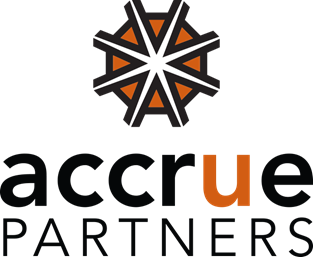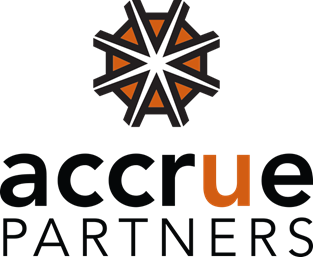
At the start of 2020, when the economy was poised to extend its years-long bullish business sentiment and record-low unemployment, salary increases were moving along as planned with 66% of employers already implementing pay raises in the first quarter, according to the nationwide Gallagher’s 2020/2021 Salary Planning Survey, in which 1283 organizations participated.
However, in March 2020 when the onset of the COVID-19 global pandemic hit the U.S. with sizable force, a sharp contraction in the economy was produced, forcing most organizations to halt further salary increases. Respondents who participated in World at Work’s 2020-2021 Salary Budget Survey, had projected employee compensation would grow by 3.3% on average in 2020. The actual rate, however, is expected to fall between 2.5% to 2.9% with variations between executives, managers, exempt workers, and non-exempt workers, a drop not seen since the Great Recession.
As a result, amid an uncertain economy due to the COVID-19 global pandemic, nearly half of all Gallagher’s respondents surveyed (45%) indicated that they have taken a cautionary step back to re-evaluate their salary increase plans for 2021 with weaker than expected financial results and a renewed focus on reducing SG&A as driving factors. In fact, more than half of the employers rethinking their budgets expect to reduce salary increases next year, and 45% are moving to suspend them.
Despite these concerns, businesses are projecting a 2.8% increase in salaries for management and non-management workers and 2.7% for nonexempt salaried employees and executives. Top performers will reach a higher average at around 4.7%. On a whole, employers remain committed to providing performance incentives and short-term bonuses in 2021.
Compensation Benefits to Expect in 2021
On a somewhat more positive note, COVID-19 has reaffirmed the importance of wellbeing benefits and how they will continue to be an effective lever for retaining employees and attracting new talent. It is not surprising to see that organizations are looking at ways in which they can create win-win situations by offering customized benefits that can reduce overhead while simultaneously address the needs of employees and evolving workforce preferences.
The first among many benefits that are at the forefront of this pandemic is expanded health care coverage to include mental health coverage. Employers and employees alike are in uncharted territory having to deal with the crisis and studies have shown increased levels of depression, anxiety, and even substance abuse among workers, furloughed employees, and the unemployed. As studies suggest, even before the pandemic, employers had begun looking towards expanding healthcare coverage with virtual care or “telehealth” services.
As families begin to struggle financially with the costs of protective gear, coronavirus tests, medications, etc. organizations are looking at ways in which they can support their workforce by reimbursing a percentage or all of the costs thus alleviating some of the burden.
Sick leave is also in focus for many employers. The CARES Act lays out requirements for paid sick or parental leave for full-time employees. However, in addition to the regular leave standards, some organizations are planning to extend the number of days employees can take in 2021.
Employers are looking towards providing welcomed support to families in need of dependent care. Among flexible working policies and remote work options that continue to be a top priority for employees in today’s world, some organizations are providing financial assistance for childcare or aging parents, which is extremely attractive for retaining employees and attracting top talent.
Employee Value Proposition: The Key to 2021
The strategy to consider in 2021 may lie in the quality of the company’s employee value proposition (EVP). Organizations that are capable of presenting a high-valued promise to employees position themselves to attract the right professionals who are a perfect fit.
Employee Value Proposition Factors
Compensation: Organizations don’t have to out-compete each other by attracting talent with the highest compensation package. However, a competitive salary and bonus scheme with a transparent and fair evaluation system is necessary. Additional benefits such as health care, paid leave, retirement, etc. are equally, if not more, important to some than just a high-paying job.
Work-life balance: The world of work has changed and so have people’s priorities. For more than a decade, the idea of a sustainable balance between work and private life has flourished. Flexibility is key to addressing individual employee needs, whether it comes in hours or time worked in a day to remote locations. In this case, one-size certainly does not fit all.
Stability and growth opportunities: Employers should empower their employees through upskilling and reskilling programs to further develop their career. Education/training systems and coaching/mentoring programs are attractive to the candidate and essential for the growth of the organization.
Purpose, respect, and autonomy: Employees perform well when they are given the right purpose and autonomy to perform their duties. A positive company culture in which the organization demonstrates its core values and beliefs facilitates a general amount of well-being, comradery, and respect.
With all of the prevalent shifts in salary increases, bonuses, and benefits it will be a challenge for employers to stand out while remaining competitive in the labor market to secure the top talent in 2021. However, by adapting to employees’ needs in sensible ways and focusing on the key elements of their EVP, organizations can become more attractive among job seekers than those that are just strong in compensation.
Contact AccruePartners to learn how to successfully navigate these salary & compensation trends to attract & retain top talent for your organization in 2021.





